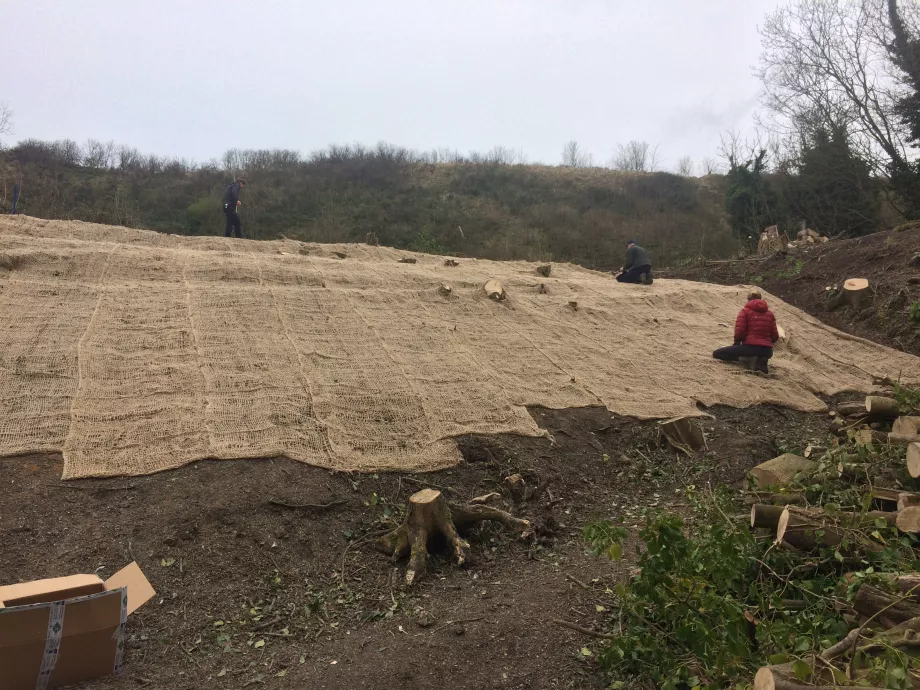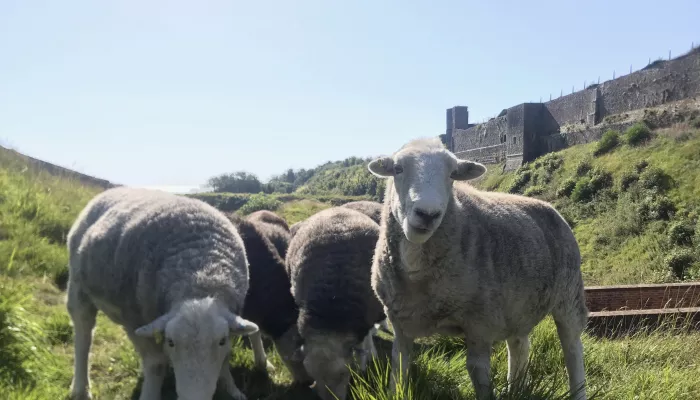
Marjoram at Dover Castle. Credit: Ian Rickards
Historically, the land surrounding the castle would have been chalk grassland, but over time this important habitat has disappeared under secondary woodland growth. Chalk grassland supports rich plant and insect life and many rare species. Sadly, chalk grassland is now incredibly rare, with 80% having been lost in the UK since the Second World War. This is mainly due to the use of herbicides and fertilisers which prevent chalk grassland species from growing.
Dover is well-known for its chalk grassland, with some 2.5% of the overall international resource found here. The ‘Dover on the Defensive’ project worked towards the restoration of chalk grassland to the historic slopes of Dover Castle, and in doing so restored vital habitat for wildflowers and the insects that rely on them. Hopefully, in the years to come, we will see the return of iconic species, such as the Adonis blue butterfly, early spider orchid, pyramidal orchid and other fragrant species.

Sheep at Dover Castle. Credit: Ian Rickards
While Kent Wildlife Trust had hoped to continue including the local community to help carry out this work during 2020 and onwards, the UK Government’s advice on the Covid-19 pandemic prevented the participation of volunteers during this time.
Ian Rickards, Area Manager at Kent Wildlife Trust said:
“This project has been an excellent opportunity to link our cultural history with our wildlife, restoring a landscape that would have been a common sight for our ancestors. It is such a shame that we have not been able to involve the community in this final stage of the project, but we are grateful for all their help prior to the pandemic and we hope everyone can appreciate the benefits over the coming years.”

